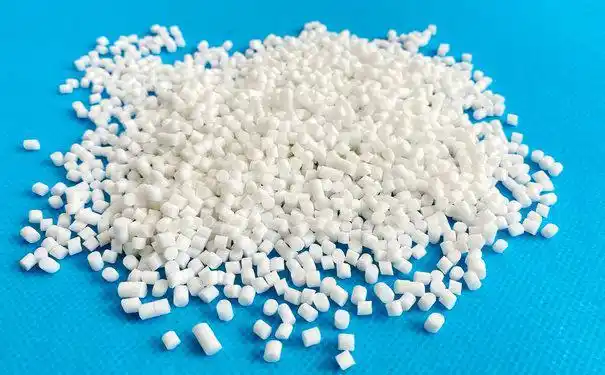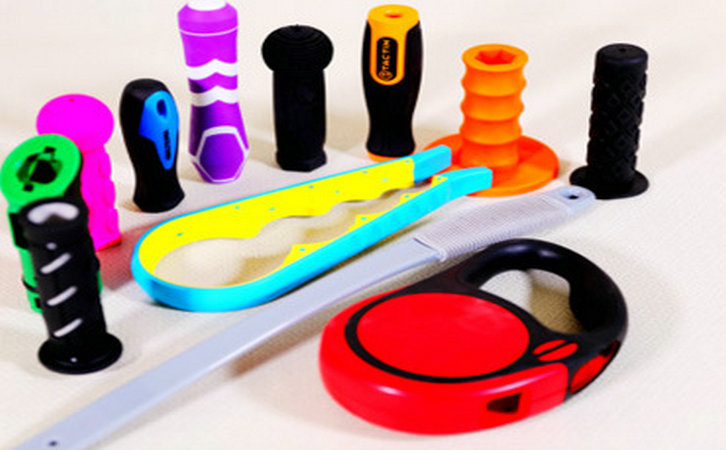As someone who’s been immersed in the plastics and elastomer industry for over a decade, I’ve seen my fair share of material quirks and challenges. One question that keeps popping up, especially from manufacturers and product designers, is why combining TPE (Thermoplastic Elastomer) and TPR (Thermoplastic Rubber) sometimes results in an unexpected whitening effect. This issue can be frustrating, particularly when you’re aiming for a clean, consistent product appearance. Let me walk you through the reasons behind this phenomenon, drawing from my experience and technical knowledge, to help you understand and tackle it effectively.

Understanding TPE and TPR: A Quick Primer
Before diving into the whitening issue, let’s establish a clear picture of what TPE and TPR are, as their properties set the stage for why this happens. Both materials belong to the family of thermoplastic elastomers, which combine the flexibility of rubber with the processability of plastics. They’re widely used in industries like automotive, footwear, medical devices, and consumer goods due to their versatility, recyclability, and ease of molding.
TPE is a broad category of materials, encompassing various formulations like styrenic block copolymers (SBCs), thermoplastic polyurethanes (TPUs), and thermoplastic vulcanizates (TPVs). It’s known for its softness, flexibility, and ability to be tailored for specific applications.
TPR, often considered a subset of TPE, typically refers to materials based on styrene-butadiene-styrene (SBS) or styrene-ethylene-butadiene-styrene (SEBS) block copolymers. It’s prized for its rubber-like elasticity, durability, and cost-effectiveness, especially in applications like shoe soles and grips.
While TPE and TPR share similarities, their chemical compositions and additive systems can differ significantly, which is where the whitening issue comes into play. In my years working with these materials, I’ve learned that small differences in formulation can lead to big headaches if not managed properly.
Why Does Whitening Occur?
The whitening effect when TPE and TPR are combined—whether through overmolding, co-bonding, or blending—stems from a few key factors. These range from chemical incompatibilities to physical stress and environmental influences. Let’s break it down.

1. Additive Migration and Precipitation
One of the most common culprits behind whitening is the migration of additives within the material. Both TPE and TPR formulations often include additives like plasticizers, stabilizers, and lubricants to enhance performance. For example, TPR might contain tackifiers or release agents like erucic acid amide or oleic acid amide to improve mold release or surface feel. When these materials are combined, especially under heat or mechanical stress during processing, these additives can migrate to the surface.
If the additives are incompatible with the other material or added in excess, they can precipitate as a white, powdery substance. This is particularly noticeable with low-molecular-weight additives, which are prone to “blooming” or seeping out over time. In my early days working with a footwear manufacturer, we encountered this issue when overmolding TPR onto a TPE base. The white powder that appeared on the surface was traced back to an excessive amount of a lubricant in the TPR formulation, which wasn’t fully compatible with the TPE matrix.
2. Material Incompatibility
TPE and TPR formulations aren’t always chemically compatible, especially if they’re based on different polymer systems (e.g., SBS vs. SEBS or TPE with a TPV base). When you combine materials with differing polarities or molecular structures, they may not bond seamlessly. This can lead to phase separation, where the materials don’t fully integrate, creating micro-regions of stress or uneven surfaces that scatter light, resulting in a whitish appearance.
I recall a project where we tried co-bonding a TPR based on SBS with a TPE formulated with a TPV matrix. The result was a cloudy, white interface that looked unappealing. After some trial and error, we realized the issue was the mismatch in polarity between the two materials, which prevented proper adhesion and caused visible defects.
3. Mechanical Stress and Surface Damage
Another factor is the mechanical stress introduced during processing, such as injection molding or extrusion. When TPE and TPR are combined, especially in processes like overmolding, the high temperatures and pressures can cause micro-abrasions or scratches on the material surface. If the formulation includes white fillers (like calcium carbonate or talc), these can become exposed under stress, creating a whitening effect.
In one instance, a client I worked with noticed whitening on a TPR grip overmolded onto a TPE handle. We found that the issue wasn’t chemical but mechanical—the mold design was causing excessive shear stress, exposing filler particles and creating a frosted look. Adjusting the mold temperature and injection speed resolved the issue.
4. Environmental Factors
Environmental exposure, such as UV light, moisture, or temperature fluctuations, can exacerbate whitening over time. TPE and TPR, especially those with SBS-based TPR, are susceptible to UV-induced degradation, which can cause surface chalking or whitening. If the combined materials have different UV or weather resistance profiles, one may degrade faster, leading to a visible contrast.
I’ve seen this in outdoor applications, like automotive seals, where a TPR component bonded to a TPE base started whitening after prolonged sun exposure. The TPR’s lower UV resistance caused it to break down, while the TPE held up better, highlighting the incompatibility.

How to Prevent Whitening: Practical Solutions
Now that we’ve covered the “why,” let’s talk about how to prevent or mitigate whitening. Over the years, I’ve developed a few strategies that have worked across various projects. Here’s what you can do:
1. Optimize Material Compatibility
Before combining TPE and TPR, consult with your material supplier to ensure compatibility. Request detailed data sheets and conduct compatibility tests. For example, if you’re using an SBS-based TPR, pair it with a TPE that has a similar styrene-based chemistry to minimize phase separation. In my experience, SEBS-based TPEs often pair better with TPRs due to their similar molecular structures.
2. Adjust Additive Levels
Work with your supplier to fine-tune the additive package. Reduce the use of low-molecular-weight additives like lubricants or plasticizers that are prone to migration. If whitening persists, consider switching to additives with better compatibility, such as those with higher molecular weights. In one case, we swapped out a problematic lubricant for a silicone-based alternative, which significantly reduced surface precipitation.
3. Refine Processing Parameters
Processing conditions play a huge role in preventing whitening. Here are some tips based on my experience:
Lower Mold Temperatures: High temperatures can exacerbate additive migration. Experiment with lower mold temperatures to reduce thermal stress.
Optimize Injection Speed: Excessive shear can cause surface damage. Slowing down the injection speed can help maintain a smooth surface.
Ensure Proper Drying: Moisture in the material can lead to surface defects. Dry TPE and TPR pellets thoroughly before processing.

4. Use Post-Processing Treatments
For finished products that show whitening, post-processing treatments can help. Wiping the surface with a solvent compatible with TPE/TPR (like isopropanol) can remove precipitated additives, though this is a temporary fix. For a more permanent solution, reformulate the material to prevent migration. I’ve found that soaking products in a solvent for an hour and observing whether whitening reappears can help diagnose the issue’s severity.
5. Enhance UV and Weather Resistance
If the product will be exposed to outdoor conditions, choose TPE and TPR formulations with enhanced UV stabilizers. SEBS-based TPEs generally offer better weather resistance than SBS-based TPRs. Adding UV-resistant additives or coatings can also help maintain appearance over time.
Comparing TPE and TPR Properties
To give you a clearer picture of how TPE and TPR differ and why their combination can lead to issues, here’s a table summarizing their key properties:
|
Property |
TPE |
TPR |
Impact on Whitening |
|---|---|---|---|
|
Base Material |
Broad range (SEBS, TPU, TPV, etc.) |
Typically SBS or SEBS-based |
Incompatible bases cause phase separation |
|
Elasticity |
High, varies by formulation |
High, rubber-like |
Stress from elasticity mismatch can expose fillers |
|
Additive Use |
Varies, often less migratory |
Often includes lubricants/tackifiers |
Excess additives lead to surface precipitation |
|
UV Resistance |
Good in SEBS/TPU formulations |
Moderate, lower in SBS-based TPR |
UV degradation causes chalking/whitening |
This table highlights why careful material selection and formulation are critical when combining TPE and TPR.
Real-World Applications and Lessons Learned
In my career, I’ve worked on projects ranging from medical tubing to automotive seals, and the whitening issue has popped up in various contexts. One memorable case involved a client producing a TPE-TPR composite for a sports equipment grip. The whitening appeared after a few weeks of use, frustrating both the manufacturer and end-users. After analyzing the issue, we found that the TPR contained a high level of oleic acid amide, which was migrating to the surface under humid conditions. By reformulating the TPR with a more compatible additive and adjusting the molding parameters, we eliminated the whitening and improved the product’s durability.
Another time, I worked with a toy manufacturer who noticed whitening at the interface of a TPE-TPR overmolded part. The issue was traced to mechanical stress from an overly aggressive injection speed. Slowing down the process and using a TPE with a closer polarity match to the TPR solved the problem, saving the client from costly rework.
Tips for Manufacturers and Designers
If you’re dealing with whitening in your TPE-TPR projects, here are some actionable takeaways:
Collaborate Early with Suppliers: Engage your material supplier during the design phase to select compatible TPE and TPR formulations. They can provide insights into additive behavior and processing requirements.
Conduct Small-Scale Tests: Before full production, run trials with small batches to identify potential whitening issues. This can save time and money.
Document Processing Conditions: Keep detailed records of mold temperatures, injection speeds, and drying times. This data can help troubleshoot issues and ensure consistency.
Consider Alternatives: If whitening persists, explore whether a single material (e.g., a TPE with TPR-like properties) can meet your needs, reducing the complexity of combining materials.

Final Thoughts
The whitening of TPE and TPR when combined is a complex issue, but it’s not insurmountable. By understanding the root causes—additive migration, material incompatibility, mechanical stress, and environmental factors—you can take proactive steps to prevent it. My years in the industry have taught me that patience and collaboration are key. Work closely with your material suppliers, experiment with processing conditions, and don’t shy away from reformulating if needed. With the right approach, you can achieve a flawless, durable product that meets both aesthetic and functional requirements.
If you’re facing this issue in your own projects, I hope my insights give you a head start. Feel free to reach out to your supplier or a materials expert to dive deeper into your specific application. The world of elastomers is full of surprises, but with knowledge and persistence, you can turn challenges into opportunities.
Related Questions and Answers
Q: Can I completely eliminate whitening in TPE-TPR combinations?
A: While it’s challenging to eliminate whitening entirely, you can minimize it by ensuring material compatibility, optimizing additive levels, and refining processing conditions. Work with your supplier to select formulations with minimal migratory additives and test thoroughly before production.
Q: Is whitening harmful to the product’s performance?
A: Whitening is often a cosmetic issue rather than a functional one, but it can indicate underlying problems like additive migration or material degradation. If the whitening is due to UV exposure or mechanical stress, it could signal reduced durability over time.
Q: Are there specific TPE or TPR brands that avoid whitening?
A: No single brand is immune to whitening, as it depends on the formulation and application. However, SEBS-based TPEs and TPRs with UV stabilizers tend to perform better. Consult with suppliers like Kraton, Hytrel, or Santoprene for tailored solutions.
Q: How do I test for whitening before full production?
A: Conduct small-scale molding trials and subject samples to accelerated aging tests (e.g., UV exposure, humidity, or thermal cycling). Wipe the surface with a solvent like isopropanol to check for additive precipitation and observe over time.





